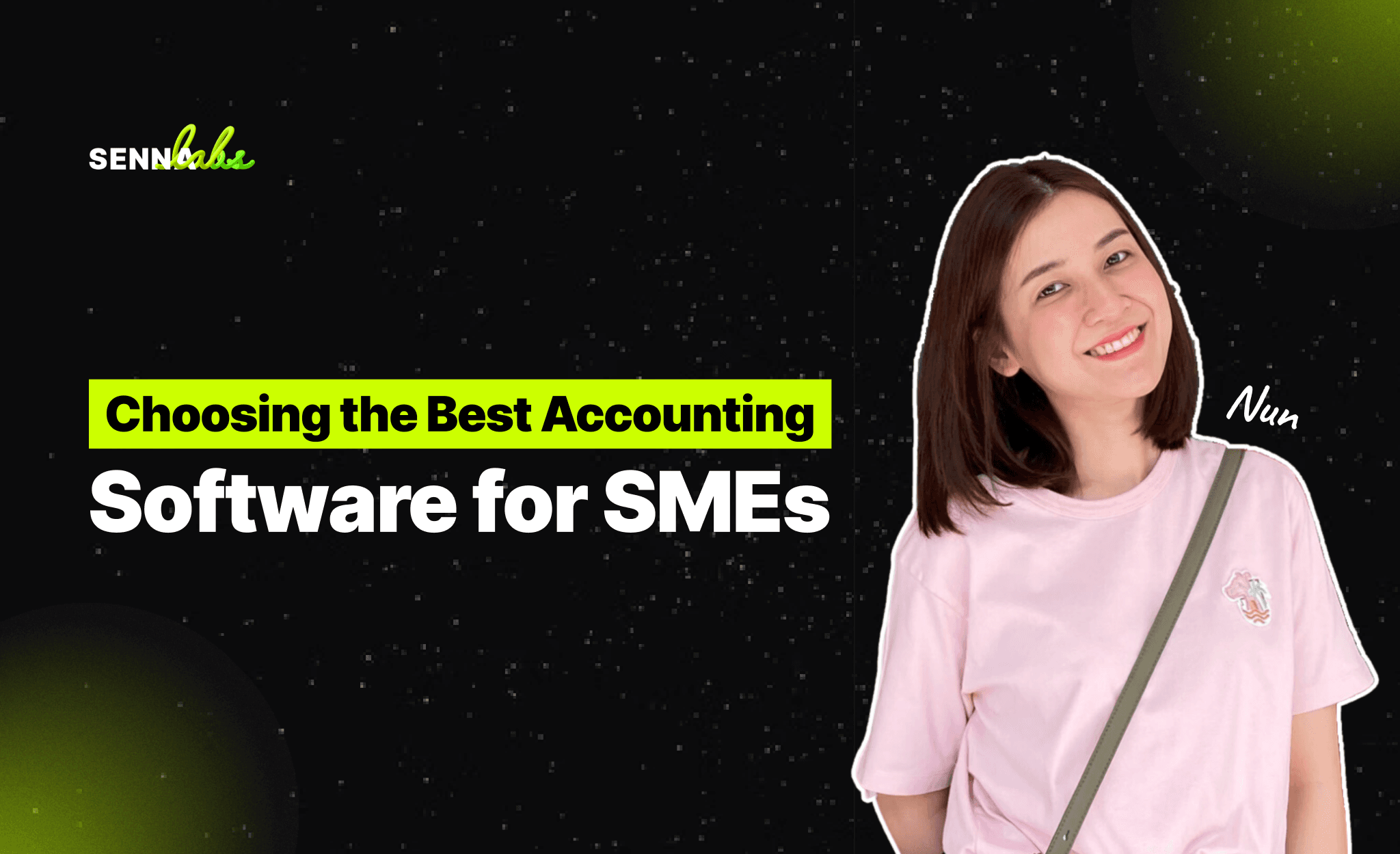Choosing the Best Accounting Software for SMEs
Share

Introduction
For small and medium-sized enterprises (SMEs), financial management is one of the most critical aspects of running a successful business. Keeping track of income, expenses, taxes, and cash flow manually can be time-consuming, prone to errors, and inefficient. Without proper financial oversight, SMEs may struggle with delayed payments, compliance issues, and poor budgeting.
Accounting software provides SMEs with an automated, streamlined solution to manage their finances. It allows businesses to generate invoices, track payments, monitor cash flow, and prepare tax reports with minimal manual effort. This article explores the importance of accounting software for SMEs, the key features to consider, and how a small consulting firm improved its financial management with a cloud-based accounting system.

Why SMEs Need Accounting Software
For many SMEs, manual bookkeeping using spreadsheets or paper-based systems is still common. However, this approach is not scalable, efficient, or secure. Common challenges faced by SMEs in financial management include:
-
Errors in manual calculations, leading to incorrect financial records.
-
Time-consuming invoice processing, delaying cash flow.
-
Difficulty in tracking expenses, making budgeting inefficient.
-
Lack of real-time financial insights, hindering decision-making.
-
Complex tax filing processes, increasing the risk of penalties.
By adopting cloud-based accounting software, SMEs can automate repetitive financial tasks, improve accuracy, and gain better financial visibility, enabling them to focus on business growth.
Key Features to Look for in Accounting Software for SMEs
1. Invoice and Payment Management
-
Automatically generate professional invoices and send them to clients.
-
Set up recurring invoices for long-term clients.
-
Accept multiple payment methods to facilitate faster transactions.
2. Expense Tracking and Budgeting
-
Categorize expenses automatically for better budgeting and financial planning.
-
Upload receipts and link expenses directly to bank transactions.
-
Get real-time expense reports to monitor spending.
3. Tax Compliance and Reporting
-
Automatically calculate sales tax, VAT, and other applicable taxes.
-
Generate tax reports and financial statements for compliance.
-
Ensure easy integration with government tax filing systems.
4. Cash Flow Management and Financial Forecasting
-
Provide a dashboard overview of income and expenses.
-
Forecast future cash flow trends based on past transactions.
-
Set alerts for low cash reserves or pending payments.
5. Multi-User Access and Role-Based Permissions
-
Allow accountants, managers, and business owners to access financial data securely.
-
Set user-specific permissions to prevent unauthorized changes.
6. Integration with Other Business Tools
-
Sync with CRM, payroll, and e-commerce platforms.
-
Connect with bank accounts for real-time reconciliation.
7. Cloud Accessibility and Mobile Support
-
Access financial data anytime, anywhere with cloud-based software.
-
Use mobile apps to generate invoices and track expenses on the go.
Use Case: Streamlining Financial Management for a Small Consulting Firm
Challenges Faced by the Consulting Firm Before Using Accounting Software
-
Manual Invoice Processing and Payment Delays
-
The firm relied on Word documents and spreadsheets to create invoices.
-
Clients often paid late because invoices were sent manually via email.
-
-
Difficulty Tracking Business Expenses
-
Expenses were recorded sporadically, making it difficult to assess spending.
-
The firm struggled to categorize expenses and track reimbursements.
-
-
Limited Cash Flow Visibility
-
Without real-time tracking, the firm had difficulty forecasting cash flow.
-
Decisions about investments and hiring were delayed due to financial uncertainty.
-
-
Time-Consuming Tax Compliance Process
-
The firm manually compiled financial records during tax season.
-
There was a risk of miscalculations and compliance penalties.
-
How Cloud-Based Accounting Software Solved These Issues
-
Automated Invoice Management and Payment Tracking
-
The software generated professional invoices automatically and sent reminders for late payments.
-
Clients could pay invoices using credit cards, bank transfers, and online payment gateways.
-
The firm reduced late payments by 40%, improving cash flow.
-
Simplified Expense Tracking and Categorization
-
Business expenses were automatically logged and categorized in real-time.
-
The firm could upload receipts via mobile apps, eliminating the need for paper records.
-
Improved Cash Flow Management
-
A financial dashboard provided real-time updates on income and expenses.
-
Forecasting tools helped predict cash flow trends, enabling proactive decision-making.
-
Faster and More Accurate Tax Filing
-
The system automatically calculated applicable taxes, reducing errors.
-
At the end of the fiscal year, tax reports were generated instantly, saving time.
Results After Implementing the Accounting Software
-
Invoice processing time reduced by 50%, allowing the firm to focus on client projects.
-
Expense tracking became 80% more efficient, improving financial planning.
-
Cash flow visibility improved, leading to better decision-making and investments.
-
Tax filing time reduced by 70%, eliminating last-minute stress.
How to Choose the Right Accounting Software for Your SME
1. Define Your Business Needs
-
Are you a freelancer, retail business, or service-based SME?
-
Do you need basic invoicing or full financial management features?
2. Look for Cloud-Based and Scalable Solutions
-
Cloud-based systems allow remote access and automatic updates.
-
Choose software that can grow with your business.
3. Prioritize Automation and Ease of Use
-
Ensure the software automates invoices, expenses, and tax calculations.
-
A user-friendly interface is essential for non-accounting professionals.
4. Check Integration with Other Tools
-
If you use CRM, payroll, or e-commerce platforms, ensure compatibility.
-
Look for bank integrations for automated reconciliations.
5. Compare Pricing and Customer Support
-
Consider subscription costs, transaction fees, and scalability.
-
Choose a provider with reliable customer support and training resources.
Common Mistakes to Avoid When Choosing Accounting Software
-
Not Checking for Tax Compliance – Ensure the software supports local tax regulations.
-
Ignoring Scalability – Choose a tool that can handle business growth.
-
Selecting Software Without Mobile Access – On-the-go access is crucial for busy business owners.
-
Not Automating Key Financial Processes – Manual work increases errors and inefficiencies.
-
Failing to Test Before Committing – Many platforms offer free trials—test them before purchasing.
Conclusion
For SMEs, choosing the right accounting software is essential for managing finances efficiently, ensuring tax compliance, and improving cash flow visibility. Whether it’s automating invoices, tracking expenses, or forecasting financial performance, accounting software helps reduce manual workload and prevent costly errors.
The consulting firm case study demonstrates how adopting a cloud-based accounting system streamlined invoicing, expense tracking, and tax reporting, resulting in time savings, better financial control, and improved decision-making.
For SMEs looking to enhance financial management and business efficiency, investing in the right accounting software is a crucial step toward sustainable growth and success.

Share

Keep me postedto follow product news, latest in technology, solutions, and updates
Related articles
Explore all


